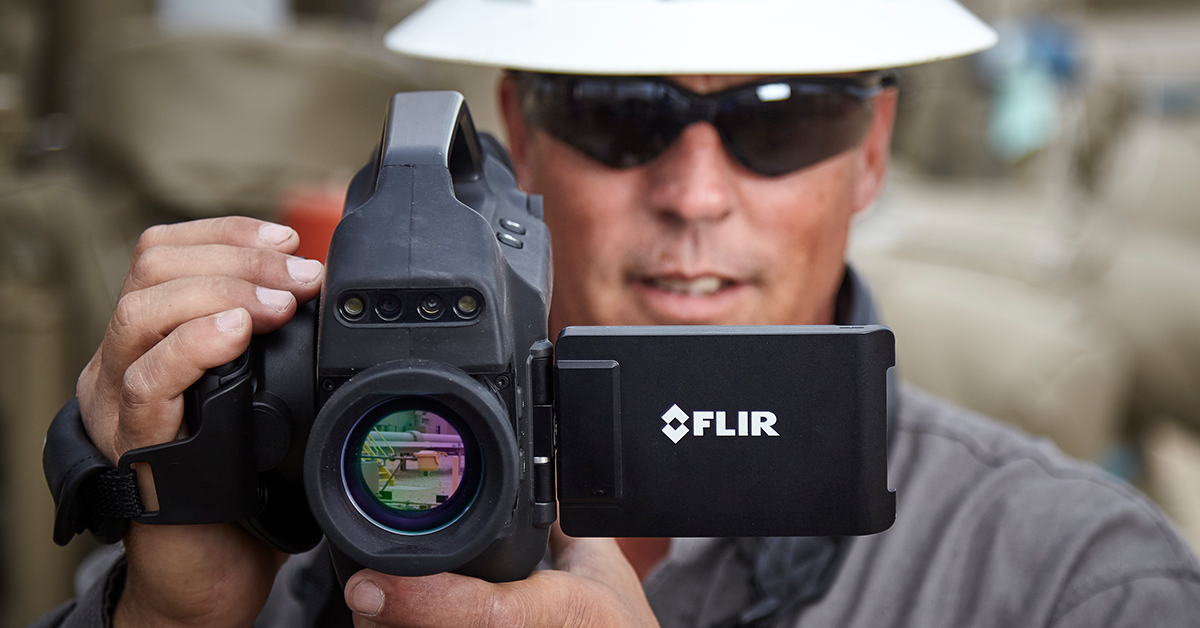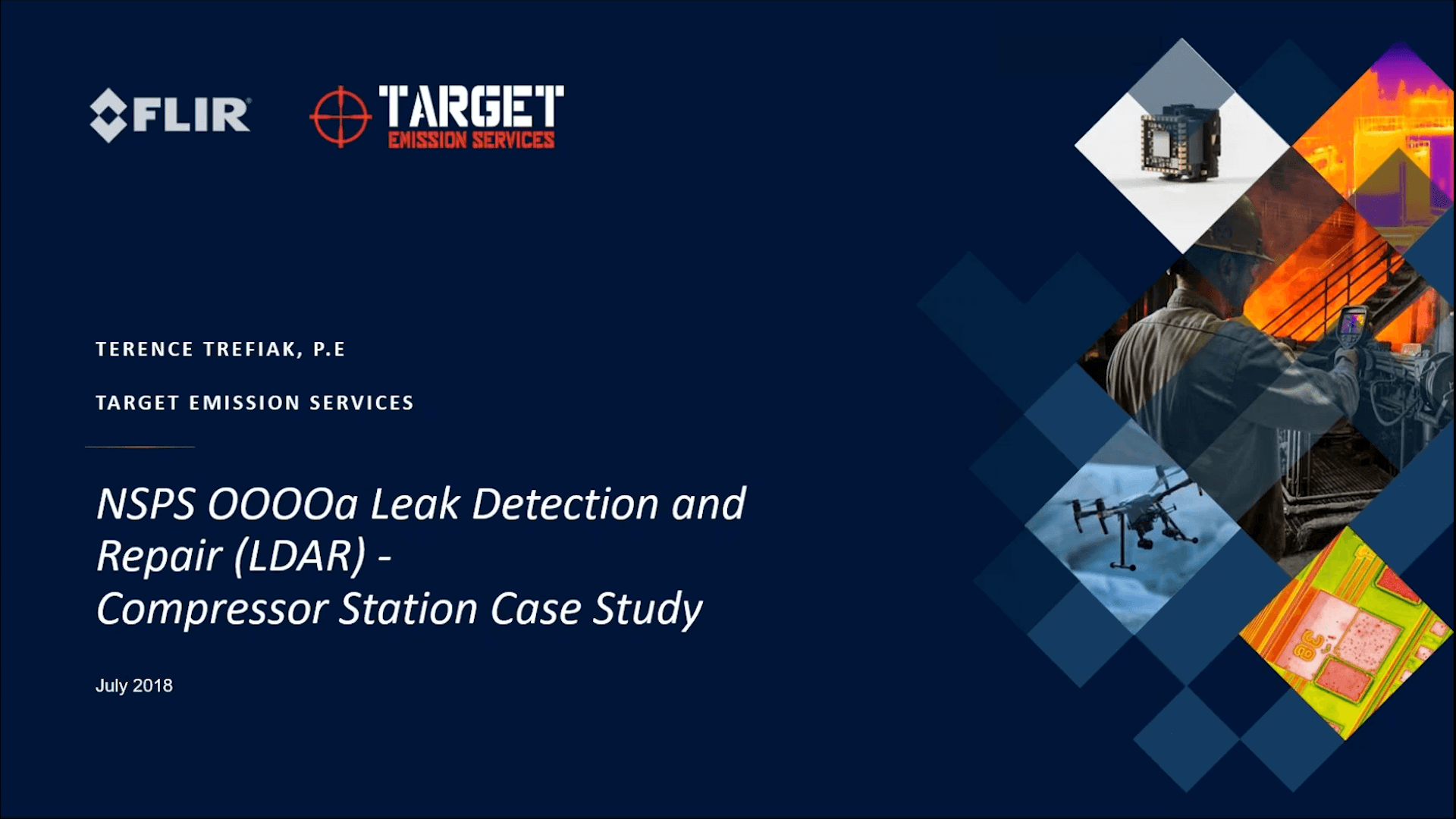NSPS OOOOa Leak Detection and Repair (LDAR) - Compressor Station Case Study

FLIR Systems and Target Emission Services' Compressor Station Case Study Webinar
The US EPA's OOOOa regulation, which came into effect in 2017, imposes OGI LDAR monitoring at new and modified compressor stations across the country. Many of these facilities had no previous LDAR requirements and there has been significant speculation on what will be found during these monitoring events.
In this recorded webinar, FLIR Systems and Target Emission Services take a detailed look inside a compressor station LDAR program. The presentation uses actual case study data to explore the following questions:
- How many and what size of leaks are being detected at these facilities?
- How have facility operators tracked repair activities and what has been the repair success rates?
- What tangible benefits have been obtained from these OOOOa programs?

About Target Emission Services
Target Emission Services provides fugitive emission surveys for the natural gas industry (transmission, processing, storage and LNG). We specialize in using Optical Gas Imaging (OGI) to detect hydrocarbon leaks and vents for regulatory compliance. To learn more about Target Emission Services visit http://www.targetemission.com/
Questions and Answers
What would the leaks shown in the videos be rated as far as small-moderate-large?
The first one was 0.67 ft3/min, which is large; the second one was small.
Is it atypical to have the OGI feed into a control center continuously? Have drones been used for flyover inspections of above ground facilities, outside of compressor stations?
It’s not typical but it is an option. Fixed OGI is usable inside a compressor station (for example) and drones could be used for well pads.
I didn't see any ID tags on the leaking equipment. What's the quad OA rule on tags?
You can use a tag or picture. Target Emission uses leak tags and takes pictures and videos.
Can you use a fixed camera system for certain pieces of equipment?
Yes. FLIR offers this.
Can you confirm that it is 30 days to repair and then another 30 days to resurvey vs 30 days to do both?
It takes 30 days to repair and 30 days to resurvey.
I may have missed the slide, how are you quantifying gas volume rates from the leaks using the OGI camera?
Approximately 20% of the leaks were quantified with a Hi-Flow Sampler to determine actual mass flow rate. The remining 80% were estimated based on the OGI video. Our technicians are quite accurate at estimating rates.
How large are the 10 sec video files of the leak source?
3000 to 4000 KB
What were the most likely sources you found that leak?
On or around the compressor and on the valve caps. The most common was fuel gas systems.
Can we characterize the gas leak?
The OGI camera cannot speciate the hydrocarbon gas composition or type. However, all the gas in these surveys was dry natural gas.
How do you prove you surveyed each component without a component count?
With OGI, the component is consider in the observation path that is defined. There is no requirement to create a component inventory in OOOOa. With OGI you rely on a defined observation path and an experienced technical that knows how to identify different streams and processes. Our technicians use a check-off system where each portion of the observation path is broken into sections. As each section is scanned that area is marked on the path.
How do you ensure adequate thermal background and maximum wind speed to perform OGI survey?
Using temperature measurement in camera and anemometer. FLIR offers a chart for this online to meet OOOOa compliancy at various distances/wind speed.
Can we obtain continuous emission monitoring from this technology?
Yes. FLIR has the G300a autonomous lead detection system.
Do you find many leaks from condensate tanks for compressor sites upstream of processing facilities (so sites that are still removing liquids)?
A condensate tank vent would mainly be considered an intentional emission and not a leak (i.e. off-gassing of entrained gas in the condensate). However, some condensate tanks do have leaks from scrubber dump valves. We can test these valves with a VPAC to determine if there are leaks. However, for OOOOa this is not required.
Do you survey only in HSM or do you also use standard palettes?
We almost always use in HSM. Occasionally we record in a standard palette for ease in viewing.